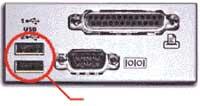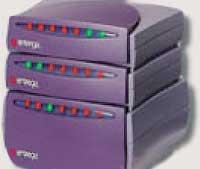USB Connect your computer to the future

The new standard adapts to the deepening of the world of connections: Known as USB or Universal Serial Bus, it is the result of an important essay by the peripheral industry. Through it we can connect the peripherals that we usually connect to the computer, from mice or simple keyboards, to scanners, digital cameras, etc., through a single cable, considerably reducing the cabling and the huge group of existing ports.
In the future all SCSI, parallel port, serial port, etc. They will be reduced to the USB port. With this new standard we can connect up to 127 peripherals to our computer without any problems and improving considerably the speed.
Plug and Play once and for all!
With the birth of Windows 95 we wanted to sell the famous Plug and Play, we heard again in the presentation of Windows 98 when Bill Gates was “stuck” the computer trying to connect a scanner. But with the new USB, once and for all, we will have an authentic Plug and Play. Until now, whenever we wanted to connect a new peripheral to our computer, we first had to turn it off, connect the peripheral and turn on the computer to accept the peripheral.
However, through the USB we can connect any peripheral with the computer on, automatically detecting the operating system and directly accepting its use. In addition, we will not have to introduce new PCI cards to our computer every time we buy a peripheral, unless it accepts the USB standard.
Faster data transmission

The communication speed will also increase considerably. The signal that goes from the peripheral to the computer will go through a four-wire cable. One of these threads will transport electricity and another take of earth, so the peripheral ones will not need a cable own of light force, which will suppose, on the one hand, that we will not need as many plugs and thieves as before, being more comfortable for us, and on the other hand, the true innovation comes here, the USB will know directly the power that each peripheral needs and depending on it will give you the one you need.
Inside the USB cable we have another two strands that will be used for data transmission. This transmission will be between 1.5 and 12 Mbit/s depending on the type of peripheral. The transmission speed of a current serial port is 100 kbit/s, so the USB multiplies this speed 15 times in the worst case. However, as in the case of external hard drives, when the speed is really important, FireWire or UltriWide SCSI are more suitable than USB.
127 to a peripheral
So far we have talked about the technical benefits of USB. But it also has other benefits. This system allows us to connect to our computer to a total of 127 peripherals. In principle, the computer will have two USB ports, but like the SCSI connector, by allowing the serial connection from one peripheral to another, the number of peripherals that we can connect directly is greater. However, it also carries the light force for the same cable, and for reasons of speed, this is not a good option. The USB properly solves this problem by offering a HUB type device. With it we can connect to our computer up to 127 peripherals simultaneously.
When and how?

Although the USB standard is immediate, it continues to gain market. First, the only operating system that supports this standard is Windows 98 on PC (and latest version of Windows 95) and Mac OS 8.5a for Macintosh. On the other hand, although the latest computers bring USB connectors by themselves (in the case of Macintosh is the only connector with the new iMac), peripheral manufacturers have not yet started to incorporate this connector into their products.
Another concern that can arise is how to connect the peripherals we already have at home. They have also thought about it and there are adapters in the market. However, we all know the speed of the computer world (or the computer market) and soon we will have to adapt our equipment to this type of innovations.
Buletina
Bidali zure helbide elektronikoa eta jaso asteroko buletina zure sarrera-ontzian











